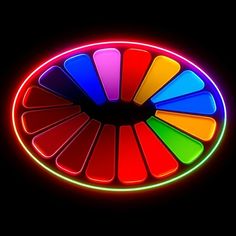The Psychology of Color: How Colors Influence Our Mood, Behavior, and Decisions
Color is more than just a visual experience—it’s a powerful psychological tool that influences our emotions, perceptions, and behaviors in ways we often don’t realize. From the red of a stop sign to the calming blue of a clear sky, colors have the ability to evoke feelings, trigger memories, and even affect our decisions.
The Science Behind Color Psychology
Color psychology is the study of how hues influence human behavior. This field is rooted in the idea that colors can evoke specific emotional responses, largely due to cultural associations and evolutionary factors. For example, the color red often symbolizes danger or urgency, while blue is associated with calmness and stability.
How Colors Affect Our Emotions and Behavior
Red: Known for its boldness, red increases heart rate and stimulates energy. It’s often used to grab attention, which is why it’s common in stop signs, warning labels, and clearance sales. However, too much red can lead to feelings of aggression or anxiety.
Blue: This color promotes a sense of tranquility and trust. It’s commonly used in corporate branding to convey professionalism and reliability. Light blues are refreshing, while dark blues can be conservative and authoritative.
Yellow: Associated with happiness, warmth, and positivity, yellow can stimulate mental activity and energy levels. However, overly bright yellow can cause eye strain and even anxiety in some people.
Green: Symbolizing nature, health, and tranquility, green has a calming effect. It’s often used in environments where relaxation is key, like hospitals or spas.
Purple: Often linked to luxury, creativity, and spirituality, purple can inspire imagination. It’s also known for its soothing qualities, especially in lighter shades.
Orange: A mix of red’s energy and yellow’s cheerfulness, orange is lively and enthusiastic. It’s frequently used in marketing to create a sense of urgency without the aggression of red.
Black: Represents sophistication, power, and elegance, but it can also evoke feelings of mourning or darkness. It’s a versatile color used in fashion and design for its timeless appeal.
White: Symbolizes purity, simplicity, and cleanliness. It’s often used in minimalist designs and medical environments to create a sense of space and clarity.
Cultural Influences on Color Perception
While some color associations are universal, cultural differences play a significant role. For example
In Western cultures, white is often associated with weddings and purity.
In Eastern cultures, white is a color of mourning and is worn at funerals.
Red is lucky and auspicious in China, while it can signal danger in other contexts.
The Role of Color in Branding and Marketing
Businesses leverage color psychology to influence consumer behavior. Think of Coca-Cola’s red branding, which evokes excitement and passion, or the calming blue of Facebook, which fosters a sense of trust and community.
Using Color Psychology in Daily Life
For productivity: Blue and green tones can enhance focus and reduce stress.
For relaxation: Soft pastels like lavender and light gray can create a peaceful environment.
For motivation: Bright colors like orange and yellow can boost energy and creativity.
Conclusion
Color is more than just an aesthetic element; it’s a powerful psychological tool that shapes our experiences and perceptions. Whether it’s the color of a room, a brand logo, or the clothes we wear, understanding the psychology of color can help us make more informed choices in our personal and professional lives.








